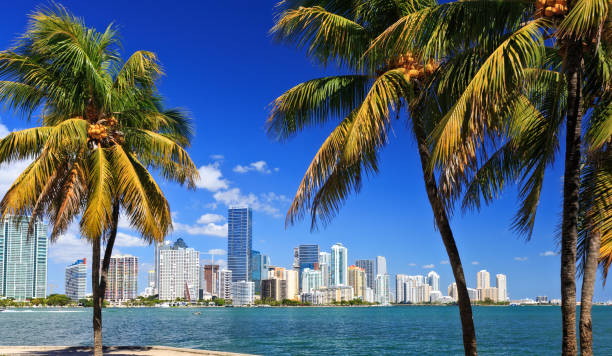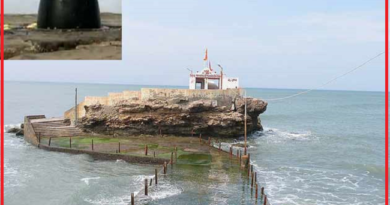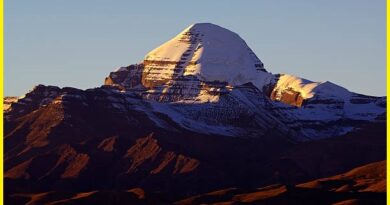Top Destinations: Exploring America’s Best States to Visit
USA
The United States of America (USA) is a diverse and vast country located primarily in North America. The USA is the third-largest country by total area in the world. It spans across 50 states, each with its distinct geography ranging from mountains, plains, and forests to deserts and coastal regions. It also includes territories in the Pacific and Caribbean. The USA has several iconic cities including New York City (financial hub and cultural center), Los Angeles (entertainment capital), Chicago (known for architecture and industry), Washington D.C. (capital city), San Francisco (tech hub), and many others known for their unique characteristics and attractions.
Best states to visit in the USA
The best states to visit in the USA can vary depending on personal preferences and interests, but here are some top contenders known for their diverse attractions-
California
California, often referred to as the Golden State is one of the most iconic and diverse states in the USA and is the best state to visit in the USA. California is located on the West Coast of the United States and is the third-largest state by area. It boasts a diverse geography that includes coastal beaches, rugged cliffs, fertile valleys (such as the Central Valley, known for agriculture), mountains (including the Sierra Nevada and the coastal ranges), and deserts (like the Mojave Desert).
Cities
California is home to several major cities, each with its unique character- Los Angeles is the second-largest city in the USA and a global center for entertainment (Hollywood), culture, and business. San Francisco: Known for its iconic landmarks like the Golden Gate Bridge, diverse neighborhoods, and tech industry influence (Silicon Valley). San Diego: Famous for its beaches, parks, and pleasant climate, it’s also a hub for the defense and tourism industries. Sacramento: The state capital, located in Northern California, is known for its history and government institutions.
California’s culture is rich and diverse, influenced by its history of Native American heritage, Spanish colonization, the Gold Rush era, and waves of immigration. It’s known for its laid-back lifestyle, cultural diversity, and progressive values. California is renowned for its natural wonders and outdoor activities- Yosemite National Park is famous for its towering granite cliffs, waterfalls, and giant sequoia trees. Death Valley: Known for being one of the hottest places on Earth and its stark desert landscapes. Big Sur: A rugged stretch of coastline along Highway 1, offering breathtaking views and hiking opportunities. Lake Tahoe: A large freshwater lake in the Sierra Nevada, known for its clear blue waters and ski resorts.
California is a global hub for the entertainment industry, with Hollywood as its centerpiece. It’s also a hotspot for cultural events, music festivals (such as Coachella), and museums (like the Getty Center in Los Angeles). California hosts some of the top universities in the world, including Stanford University, University of California campuses (such as UCLA and UC Berkeley), and the California Institute of Technology (Caltech). California’s climate varies significantly from region to region. Coastal areas generally have a Mediterranean climate with mild, wet winters and dry summers, while inland areas experience hotter summers and colder winters.
New York
New York, often referred to as the Empire State is vibrant and iconic in the northeastern United States and is the best state to visit in the USA. New York is located in the northeastern region of the USA. It is bordered by Vermont, Massachusetts, Connecticut, New Jersey, and Pennsylvania. The state has diverse geographical features including the Adirondack Mountains in the north, the Catskill Mountains in the southeast, and the Finger Lakes region in central New York.
New York City: The most populous city in the USA and a global hub for finance, culture, media, and fashion. New York City consists of five boroughs: Manhattan, Brooklyn, Queens, The Bronx, and Staten Island. Major landmarks include Times Square, Central Park, the Statue of Liberty, the Empire State Building, and Broadway theaters. New York is known for its cultural diversity, reflected in its neighborhoods, cuisine, arts, and entertainment. It is home to world-class museums (such as the Metropolitan Museum of Art and the Museum of Modern Art), renowned theaters (Broadway and Off-Broadway), and cultural events like the New York Fashion Week and the Tribeca Film Festival.
New York has a rich history dating back to Dutch and British colonial times. It played a pivotal role in the American Revolution and later became a center for immigration, leading to its cultural diversity and economic growth. Education: New York State is home to prestigious universities and colleges, including Columbia University, New York University (NYU), Cornell University, and the State University of New York (SUNY) system.
Beyond the urban landscape of New York City, the state offers natural attractions such as the Adirondack Park (the largest state park in the USA), the Hudson River Valley, Niagara Falls (shared with the neighboring state of New York), and the Finger Lakes region known for its vineyards and outdoor recreation. New York has a strong sports culture with teams in major professional leagues such as the New York Yankees (MLB), New York Knicks (NBA), New York Giants and New York Jets (NFL), and New York Rangers (NHL). New York experiences a variety of climates across the state. In New York City and downstate areas, the climate is generally humid subtropical, while upstate areas have colder winters and more snowfall.
Also read- 8 Best Natural Hot Springs in the USA
Hawaii
Florida
Alaska
Alaska, often referred to as “The Last Frontier,” is a unique and expansive state located in the northwest extremity of North America. Alaska is the largest state in the United States by area, spanning over 663,000 square miles. It is situated in the far northwest corner of North America, separated from the contiguous United States by Canada. Alaska’s geography includes vast wilderness areas, mountains, glaciers, tundra, and thousands of miles of coastline. Alaska’s largest city is Anchorage, located in the south-central part of the state. Other notable cities include Fairbanks, known for its role in the Alaska Gold Rush, and Juneau, the state capital located in the southeastern panhandle.
Natural Beauty: Alaska is renowned for its stunning natural landscapes and outdoor activities- Glaciers: Alaska is home to numerous glaciers, including the famous Glacier Bay National Park and Preserve and the massive Hubbard Glacier. Mountains: The state is dominated by mountain ranges, including the Alaska Range with North America’s highest peak, Denali (formerly known as Mount McKinley). Wildlife: Alaska boasts diverse wildlife, including grizzly bears, moose, caribou, wolves, and marine mammals like whales and sea otters. Northern Lights: Alaska offers excellent viewing opportunities for the Aurora Borealis (Northern Lights) during the winter months, especially in the Interior and Arctic regions.
Alaska has a diverse climate due to its vast size. The climate ranges from Arctic in the north to maritime and temperate in the south. Winters are cold and snowy, while summers can be mild to warm depending on the region. Alaska’s culture is influenced by its Native Alaskan heritage, Russian history (due to Russian colonization), and later American settlement. Native Alaskan cultures include Inuit, Yupik, Aleut, and Athabaskan peoples, each with their own traditions, languages, and art forms.
Alaska is a paradise for outdoor enthusiasts, offering activities such as fishing, hunting, kayaking, hiking, dog sledding, snowmobiling, and skiing. National parks and wildlife refuges provide opportunities for wilderness exploration and photography. Alaska’s history includes early Native settlements dating back thousands of years, Russian exploration and colonization in the 18th century, and the United States’ purchase of Alaska from Russia in 1867 (known as the Alaska Purchase).
Nevada
Texas
Texas, often referred to as the Lone Star State is the second-largest state in the United States both by area and population. Texas is located in the southern part of the United States, bordered by Louisiana to the east, Arkansas to the northeast, Oklahoma to the north, New Mexico to the west, and Mexico to the southwest. It has diverse geographical features including plains, forests, deserts, and coastline along the Gulf of Mexico.
Cities: Texas is home to several major cities, each with its own unique character- Houston: The largest city in Texas and the fourth-largest city in the USA, known for its energy industry (oil and gas), diverse population, and cultural attractions like the Space Center Houston. Dallas: A major business and financial hub with a prominent arts district, historic sites like Dealey Plaza, and professional sports teams. San Antonio: Famous for its historic missions (including the Alamo), River Walk (a network of walkways along the San Antonio River), and cultural events like Fiesta San Antonio. Austin: The state capital is known for its live music scene, festivals (such as SXSW), tech industry (including Dell and numerous startups), and outdoor recreation along Lady Bird Lake.
Texas has a rich cultural heritage influenced by its history as a former Spanish and Mexican territory, as well as its Wild West and cowboy traditions. Texan culture is celebrated through food (Tex-Mex cuisine, barbecue), music (country, blues, Tejano), festivals (like rodeos and county fairs), and sports (especially football).
Natural Beauty: Texas offers a variety of natural attractions and outdoor activities- Big Bend National Park: Located in West Texas along the Rio Grande, known for its rugged landscapes, hiking trails, and starry skies. Gulf Coast: Miles of sandy beaches, fishing opportunities, and coastal towns like Corpus Christi and Galveston. Hill Country: A scenic region known for rolling hills, wineries, state parks (like Pedernales Falls), and German heritage towns such as Fredericksburg.
Texas is home to several prestigious universities and colleges, including the University of Texas at Austin (UT Austin), Texas A&M University (College Station), Rice University (Houston), and Southern Methodist University (Dallas). Texas has a storied history including its period as an independent republic (1836-1845) before joining the United States. It played a significant role in the Mexican-American War and the cattle ranching era of the late 19th century.
Arizona
Arizona, known as the Grand Canyon State, is a diverse and scenic state located in the southwestern United States and is the best state to visit in the USA. Arizona is bordered by Utah to the north, Colorado to the northeast, New Mexico to the east, Nevada to the northwest, California to the west, and Mexico to the south. The state is known for its dramatic landscapes, including the Grand Canyon, Sonoran Desert, mountains, and plateaus. Arizona’s largest city and capital is Phoenix, located in the central part of the state. Other major cities include Tucson, known for its arts and cultural scene, and Flagstaff, situated in the northern part of the state near the San Francisco Peaks.
Natural Beauty: Arizona offers stunning natural landscapes and outdoor activities- Grand Canyon National Park: One of the Seven Natural Wonders of the World, famous for its vast canyon vistas, hiking trails, and Colorado River rafting. Saguaro National Park: Located near Tucson, known for its giant saguaro cacti and diverse desert flora and fauna. Antelope Canyon: A slot canyon near Page, famous for its swirling sandstone formations and light beams. Monument Valley: A red-sand desert region on the Arizona-Utah border, known for its iconic buttes and mesas featured in many Western films.
Arizona has a varied climate due to its elevation changes and geographic diversity. The southern desert regions experience hot summers and mild winters, while the northern mountainous regions have cooler temperatures and snowfall in winter. Arizona’s culture is influenced by its Native American heritage (including Navajo and Hopi tribes), Spanish colonial history, and Wild West cowboy traditions. The state celebrates its cultural diversity through festivals, art galleries, and Native American reservations.
Arizona is a haven for outdoor enthusiasts, offering activities such as hiking, rock climbing, mountain biking, golfing, and wildlife viewing. The state’s national forests, state parks, and wilderness areas provide ample opportunities for exploration and adventure. Arizona is home to several universities and colleges, including Arizona State University (ASU) in Tempe, University of Arizona (UA) in Tucson, and Northern Arizona University (NAU) in Flagstaff. Arizona’s history includes Native American civilizations dating back thousands of years, Spanish exploration and colonization, and its period as part of the Mexican territories. It became a U.S. territory in 1863 and achieved statehood in 1912 as the 48th state.
Arizona’s combination of natural wonders, cultural richness, outdoor recreational opportunities, and modern urban centers makes it a fascinating destination for residents and visitors alike.
Colorado
Colorado, known as the Centennial State, is a diverse and scenic state located in the western United States and is the best state to visit in the USA. Colorado is characterized by its diverse geography, including the Rocky Mountains, high plains, deserts, and rivers. It is known for its elevation, with the highest average elevation of any state in the USA. Colorado’s capital and largest city is Denver, located in the eastern foothills of the Rocky Mountains. Other major cities include Colorado Springs (known for its proximity to Pikes Peak), Boulder (home to the University of Colorado), and Fort Collins.
Natural Beauty: Colorado offers stunning natural landscapes and outdoor activities- Rocky Mountain National Park is a major attraction with majestic mountain scenery, alpine lakes, and abundant wildlife including elk and bighorn sheep. Ski Resorts: Colorado is famous for its world-class ski resorts such as Aspen, Vail, Breckenridge, and Steamboat Springs, offering skiing, snowboarding, and winter sports. Garden of the Gods: A unique geological area near Colorado Springs featuring red rock formations and hiking trails. Great Sand Dunes National Park: Home to North America’s tallest sand dunes against the backdrop of the Sangre de Cristo Mountains.
Colorado is a haven for outdoor enthusiasts, offering hiking, mountain biking, rock climbing, whitewater rafting, fishing, camping, and wildlife viewing. The state’s extensive trail system and national parks attract adventurers from around the world. Colorado’s culture is influenced by its mining and frontier history, Native American heritage, and modern outdoor lifestyle. The state is known for its craft breweries, music festivals (like Red Rocks Amphitheatre), and cultural events. Colorado is home to several universities and colleges, including the University of Colorado system, Colorado State University in Fort Collins, and the Colorado School of Mines in Golden. Colorado’s history includes Native American tribes such as the Ute and Arapaho, Spanish exploration, the Pike’s Peak Gold Rush in the mid-1800s, and statehood in 1876 as the 38th state of the USA.





